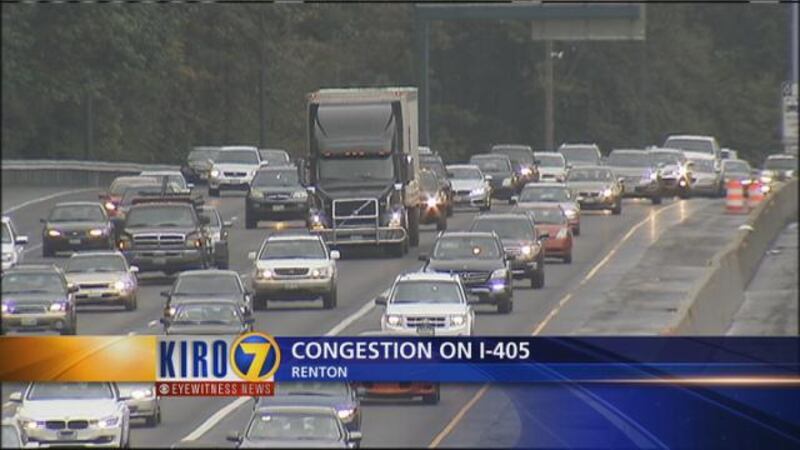Drivers will largely be on the honor system when it comes to the number of people inside a car traveling on the Interstate 405 express toll lanes designated for high-occupancy vehicles that open Sept. 27.
HOV rules are enforced by Washington State Patrol troopers like Clark Jones, who acknowledges challenges ahead because the new toll lanes will require cars in HOV mode to have a minimum of three occupants during peak commutes.
Troopers will have to see into the back seat.
"Sometimes it's difficult to see a child in the back seat and sometimes cars have dark tint," Jones said.
Right now, the only local freeway requiring three people for HOV is a stretch of 520.
Unlike traditional HOV lanes, the I-405 express toll lanes between Bellevue and Lynnwood will be open to solo drivers, for a price, between 75 cents and $10 depending on traffic.
To avoid a toll, drivers must flip a flex pass to HOV mode.
They need at least two people in the car during off hours and three people during busy commutes.
A red square on the flex pass while in HOV mode will be visible to troopers through the windshield.
The transponder will trigger a flashing light as drivers pass beneath a sensor, which indicates a driver is claiming HOV mode, inviting troopers to look closer.
More sophisticated technology is being developed to improve HOV enforcement.
A Xerox system is being tested in San Diego, which briefly lights up the inside of a passing car.
Xerox says it can count vehicle occupants without violating privacy, and can redact faces, temporarily or permanently.
Xerox claims an accuracy rate of 99 percent for two-person carpool lanes, and 95 percent for three-person lanes.
Privacy advocates warn the technology should be carefully monitored.
More people-counting possibilities under discussion in transportation circles could also raise privacy concerns.
The concerns include tapping into the system in many cars that lets you know when someone doesn't have a seat belt on, because such systems know how many people are in a car.
Another idea is to develop an app to allow people to take selfies to prove the number of people in a car.
"The DOT would never have to look at that, they wouldn't want to look at those pictures, it would take too long," said University of Washington transportation researcher Mark Hallenbeck.
Hallenbeck said a selfie app to audit HOV compliance was proposed by a couple of UW researchers but dropped for lack of funding.
Money is one reason the state is launching express toll lanes without any sophisticated enforcement system.
Craig Stone of the Washington State Department of Transportation said Xerox responded to a state request for a pilot project, but the bid was too expensive.
"We felt it wasn't the time, and it was above the budget," Stone said.
The other reason WSDOT will, for now, rely on troopers and a pretty basic flashing light system, is that drivers here are less likely to break the rules.
"Our violations of HOV are 1 percent in the Everett area, about 5 percent for this region," Stone said.
Local violation rates can be as high as 7 percent, but that's still below the national average of 10 percent to 15 percent.
WSDOT, and state troopers, hope our good citizenship holds true as the new express toll lanes open.
KIRO








